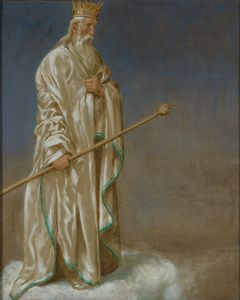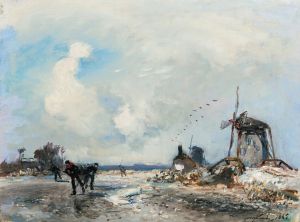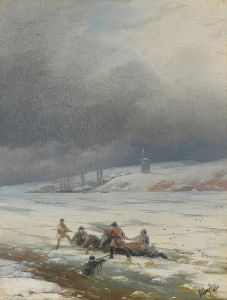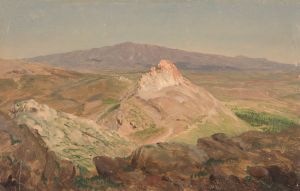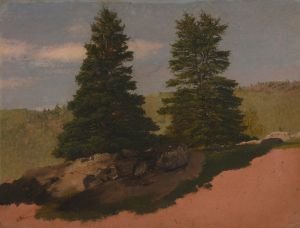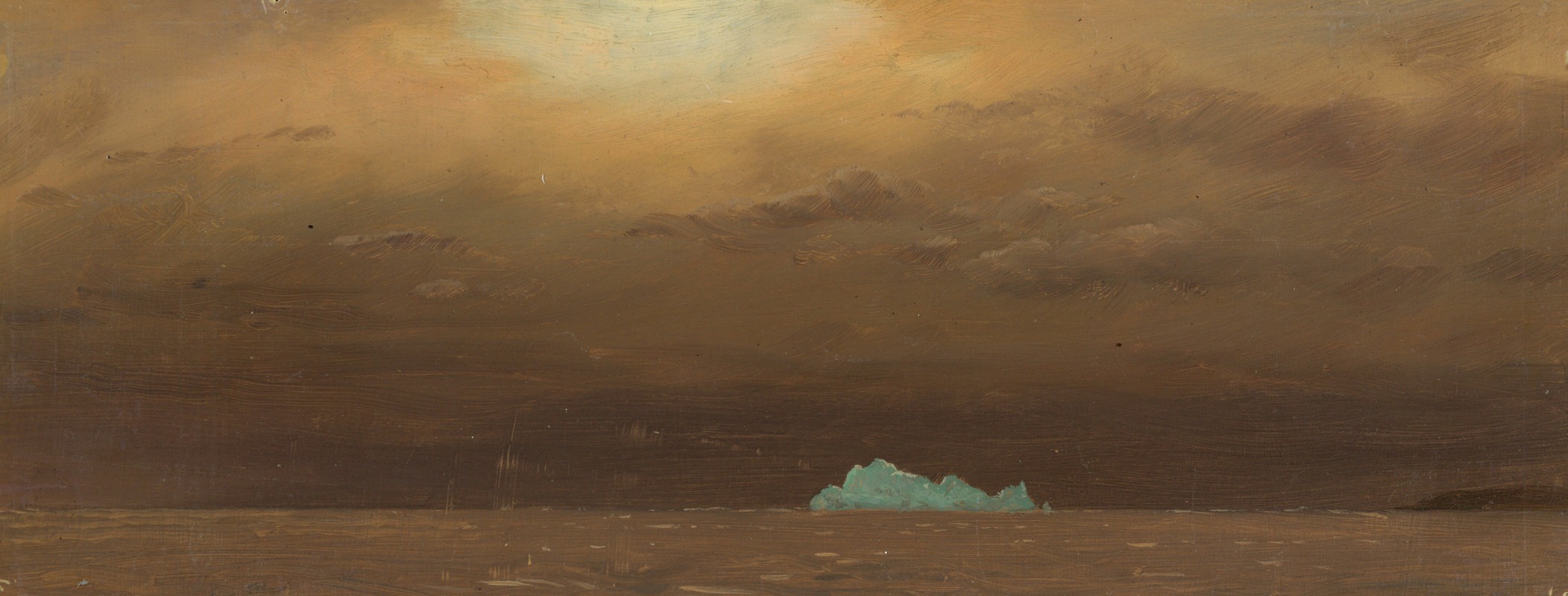
Iceberg, Newfoundland
A hand-painted replica of Frederic Edwin Church’s masterpiece Iceberg, Newfoundland, meticulously crafted by professional artists to capture the true essence of the original. Each piece is created with museum-quality canvas and rare mineral pigments, carefully painted by experienced artists with delicate brushstrokes and rich, layered colors to perfectly recreate the texture of the original artwork. Unlike machine-printed reproductions, this hand-painted version brings the painting to life, infused with the artist’s emotions and skill in every stroke. Whether for personal collection or home decoration, it instantly elevates the artistic atmosphere of any space.
"Iceberg, Newfoundland" is a painting by the renowned American landscape artist Frederic Edwin Church, completed in 1861. Church was a central figure in the Hudson River School, a mid-19th century American art movement known for its romantic portrayal of the American landscape. His works often depict dramatic and expansive scenes, capturing the sublime beauty of nature.
The painting "Iceberg, Newfoundland" is a testament to Church's fascination with the natural world and his commitment to realism and detail. This particular work was inspired by Church's journey to the North Atlantic, where he encountered the majestic icebergs off the coast of Newfoundland. The painting is celebrated for its meticulous attention to detail and its ability to convey the awe-inspiring presence of these natural ice formations.
In "Iceberg, Newfoundland," Church captures the ethereal quality of the icebergs, using a palette of cool blues and whites to depict the icy surfaces and the surrounding sea. The composition is both serene and powerful, with the iceberg dominating the canvas, reflecting the light in a way that emphasizes its grandeur and isolation. The painting exemplifies Church's skill in rendering light and atmosphere, creating a sense of depth and realism that draws the viewer into the scene.
Church's interest in icebergs was part of a broader fascination with the Arctic regions, which were subjects of scientific exploration and popular interest during the 19th century. His journey to the North Atlantic was partly inspired by the writings of Arctic explorers and the public's growing curiosity about these remote and uncharted territories. Church's work, including "Iceberg, Newfoundland," contributed to the era's romanticized view of the Arctic as a place of mystery and wonder.
The painting is also notable for its historical context. Completed during the American Civil War, "Iceberg, Newfoundland" can be seen as a reflection of Church's desire to escape the turmoil and conflict of the period, seeking solace in the untouched beauty of nature. This theme of finding peace and inspiration in the natural world is a recurring motif in Church's work and the Hudson River School as a whole.
"Iceberg, Newfoundland" is housed in the collection of the Terra Foundation for American Art. It remains an important example of Church's artistic legacy and his contribution to American landscape painting. The work continues to be studied and admired for its technical mastery and its ability to evoke the sublime power of nature.
Frederic Edwin Church's "Iceberg, Newfoundland" stands as a significant piece within his oeuvre, illustrating his dedication to capturing the majesty of the natural world and his influence on the development of American art in the 19th century.





